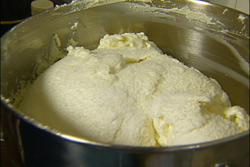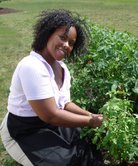Adventures in Homemade Cheese-making
Having done so well with my butter making you can only guess what was next. Now I don’t have goats, I’m not a partner at a cattle or dairy farm so why I decided to take this on was beyond me. But I had to see if I could make my own cheese. Very quickly I discovered that I didn’t have the patience or the proper set-up needed to make my own batch of extra sharp cheddar. So I decided to tackle the next best thing, Neufchâtel. A soft un-ripened fresh cheese not unlike cream cheese, even though this is considered to be a beginner cheese the process was still a little more intense than I expected. I know there are other techniques out there that require less time or effort but I basically went with the technique that seemed to be more science based.
The cheese basically took 3 days to make. Upon starting I was a nervous wreck, experiencing the same anxiety I felt the first year I grew tomatoes or made my own jam. Once I pulled myself together I started gathering the necessary ingredients. Whole Milk, buttermilk, and Rennet? Where in the world was I going to find Rennet? Rennet are the necessary enzymes needed to get the milk to coagulate or curdle, thus forming the cheese. Well, one quick Google search and I found a supplier. A week later I was ready to go, I bribed my husband to keep the girls out my hair as I embarked on this most complex science experiment. Day one seemed easy enough, mix the buttermilk with the whole milk bring the mixture to 65 degrees, add dissolved rennet, remove from heat, cover and let sit overnight. The next day curds will appear and I would be ready for the next step, removing the whey.
Well guess what? That didn’t happen. The next morning I eagerly removed the lid off my pot to see if any curds had formed. No such luck, for whatever reason there were very few curds. I let the mixture sit for another night, worried that the milk mixture would go bad sitting at room temperature but I took my chances. The following day there were lots of curds, I immediately went to work transferring the curds into cheesecloth and suspended it over a bowl where the whey would separate from the “cheese”. I put the cheese mixture in the fridge overnight to continue draining. Finally, Day four it was ready to go, I mixed in some sea salt pretty much double what the original recipe called for, let it sit for a bit then gave it a try.
In the end it took two tries until I made something I deemed edible, smooth and creamy with the slightest tang, not the best cheese but not horrendous either. My husband very lovingly told me to leave the cheese making to the experts, however he did put a little of it on a few crackers. What did I accomplish with this little experiment you may wonder? Well I was able to prove to myself that I could do it and it took me another tiny step forward towards having more of a complete sustainable food lifestyle for my family. Will I ever make Butter and Cheese again? Butter definitely, cheese I don’t think so. I may have to follow my husband’s advice on that one and leave it to the experts…but I did find this recipe on Mark Bittman’s Bitten that has me wanting to give it one last try. Apparently there are quite a few of you out there who are really into butter and cheese making so tell me what are some good tips for future butter and cheese making?
Next Time: What’s in a name? Is it better to be local or organic?
Heather Jones is a wife, mother, freelance food writer, and graduate of the Institute of Culinary Education in New York City. She has worked for Gourmet Magazine, TV Personality Katie Brown, and the New York based Indian-fusion restaurant Tabla. Heather resides in New Jersey with her husband and two daughters. She is a strong supporter of the Sustainable Food Movement and believes that education is the key to making a difference.
See These Related Cheese Stories:


